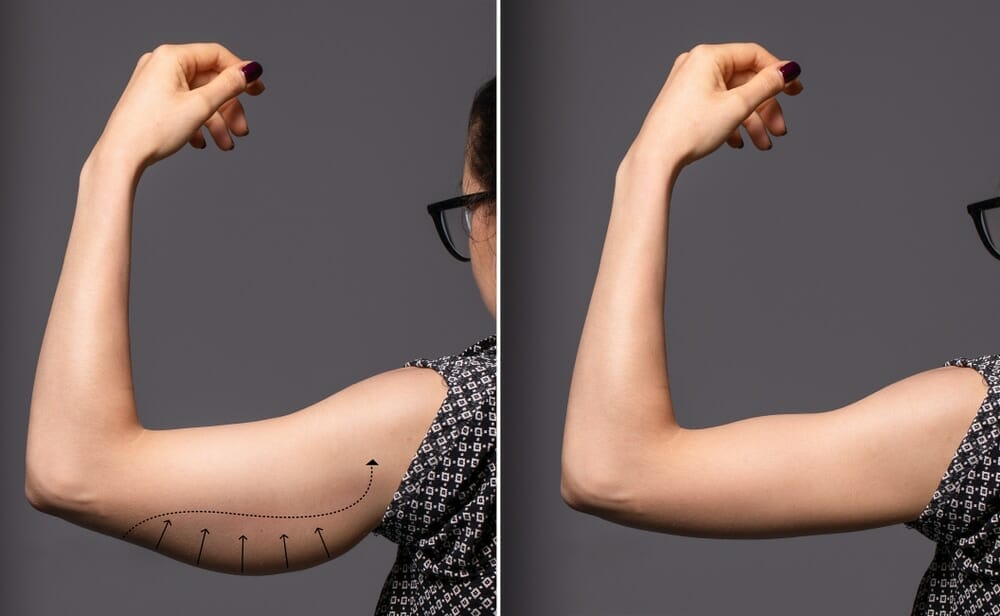
Ce qu'il faut savoir sur le lifting face interne bras
Les gestes et les régimes récurrents agissent sur la peau de la partie postérieure des bras. C’est pourquoi il y a beaucoup plus de relâchement de la peau que de surplus de graisse. Une lipoaspiration seule ne suffit pas à corriger un surplus cutané à cet endroit, il est indispensable de retendre la peau pour améliorer ce défaut. C’est ce que l’on appelle un lifting de la face interne du bras (ou lifting brachial). L’intervention a pour but de réaliser l’ablation de l’excédent de peau, de réduire l’infiltration graisseuse sous-jacente et de redraper l’ensemble. Concrètement la technique consiste en une incision dans la longueur interne du bras afin d’enlever le surplus de peau et éventuellement d’associer une lipoaspiration. Dans certains cas, l’incision peut se limiter au niveau de l’aisselle.
À noter que l’assurance-maladie ne prend pas en charge cette intervention, sauf certains cas exceptionnels de chirurgie bariatrique (défauts liés à l’obésité) qui peuvent être pris en charge sous conditions particulières.
Lifting des bras
Le chirurgien procède à un bilan clinique précis afin de choisir une opération adaptée à chaque cas: type d’incision, nécessité de lipoaspirer dans le même temps opératoire ou non. Au cours de la première consultation, il avise minutieusement le (ou la) patient(e) du déroulé de l’opération, de la phase post-opératoire et des résultats qu’il est possible d’obtenir. Il portera une attention particulière à informer le (ou la) patient(e) au sujet de la cicatrice et de son positionnement. Le bilan pré-opératoire est réalisé afin de vérifier qu’aucune contre-indication ne vienne contrarier l’intervention. Dans le cas d’une anesthésie vigile ou générale, une consultation avec le médecin anesthésiste est prévue au plus tard deux jours avant l’opération.
Afin d’éviter tout problème de cicatrisation, il est préconisé de cesser de fumer au minimum un mois avant et un mois après l’opération. Il est formellement interdit de prendre des médicaments composés d’aspirine au cours des dix jours précédant l’opération. Six heures avant l’opération, il est indispensable d’être à jeun (aucune alimentation liquide ou solide) pour certaines formes d’anesthésie.
Anesthésie et hospitalisation
L’anesthésiste et le chirurgien échangeront avec le (ou la) patient(e) pour choisir une anesthésie adaptée. Cette intervention peut être pratiquée soit sous anesthésie vigile (anesthésie locale accompagnée de tranquillisants diffusés par intraveineuse), soit sous anesthésie générale, soit sous simple anesthésie locale pour certaines situations.
Une hospitalisation en ambulatoire ou courte hospitalisation est possible: entrée la veille ou le jour même avec une sortie toujours précédée de plusieurs heures d’observation.


